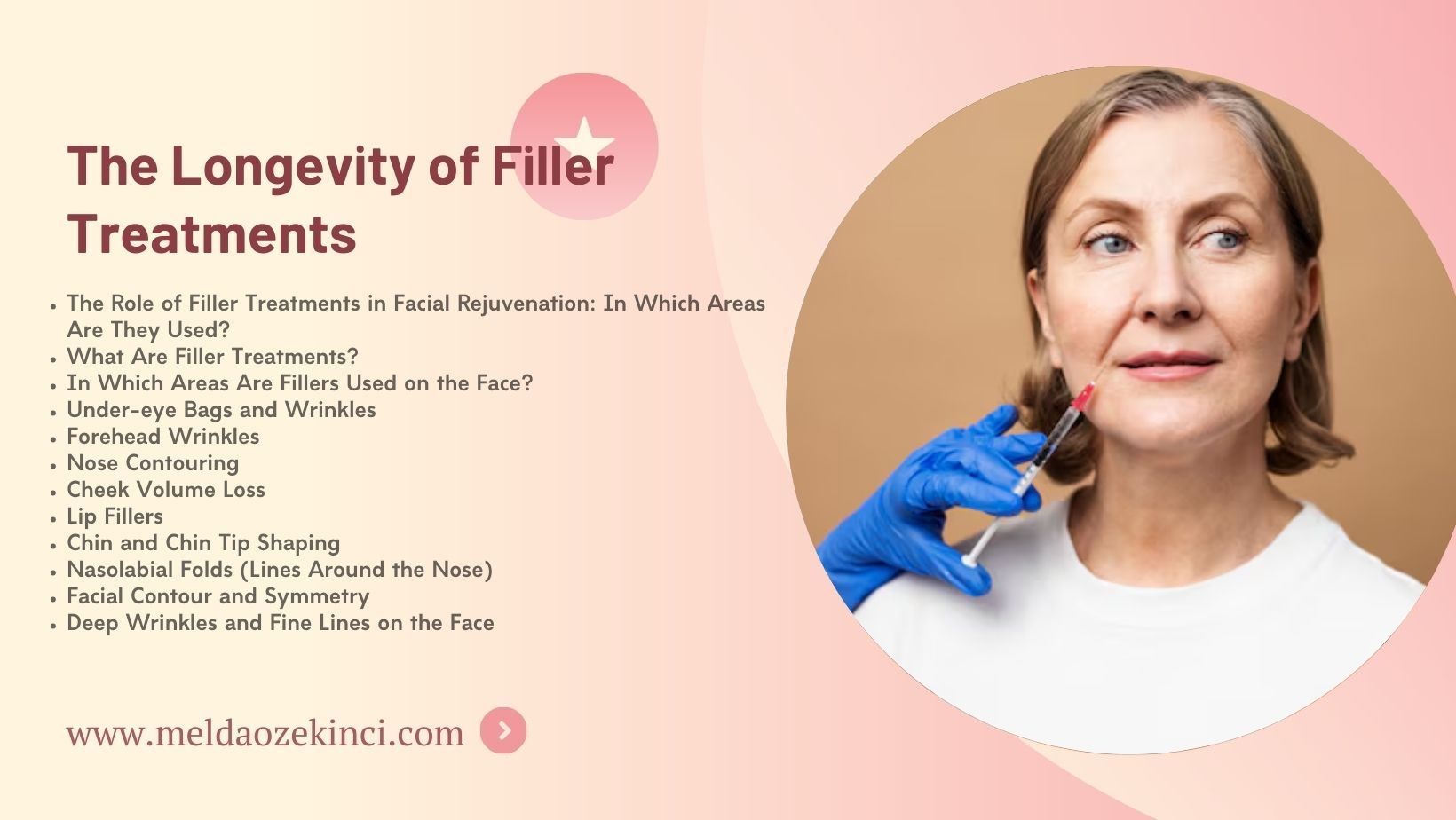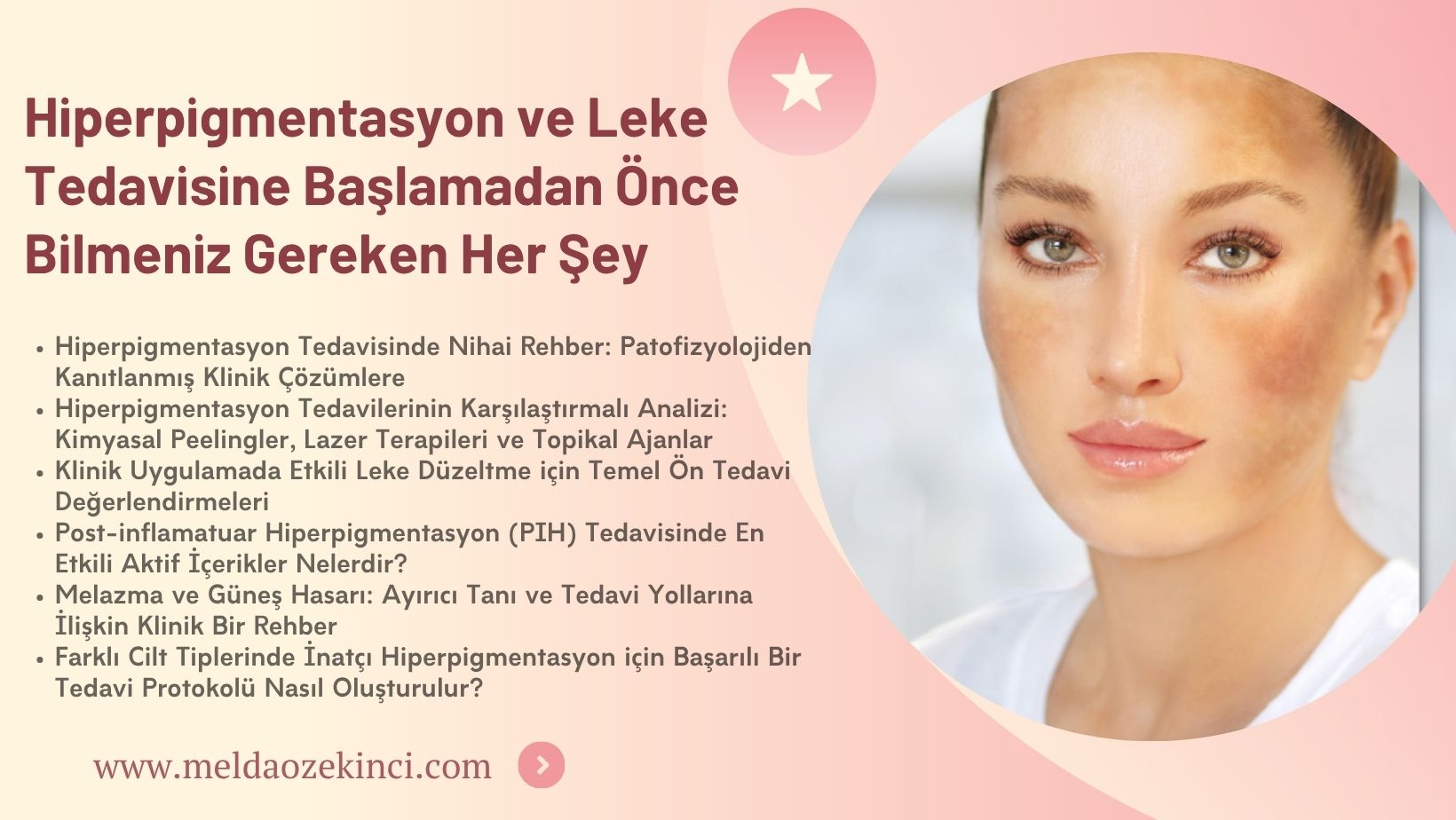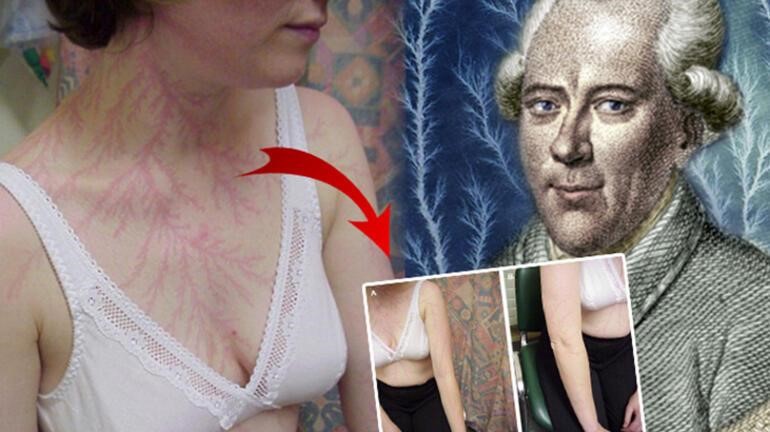The Longevity of Filler Treatments How Long Do They Last?
Filler treatments are among the most commonly used methods in the aesthetic world, providing an effective solution for enhancing facial features, eliminating wrinkles, restoring lost volume, and giving the skin a youthful appearance. As we age, the skin loses elasticity, collagen production decreases, and the effects of gravity become more apparent. Dermal fillers are an effective solution to combat these changes, offering a smoother, plumper, and more youthful look. However, one of the most frequently asked questions by patients is: "How long do fillers last and when should they be redone?" The longevity of filler treatments varies depending on the type of material used, the area treated, and individual skin characteristics.
In this article, we will discuss the longevity of filler treatments, the factors that affect how long their effects last, and when it is necessary to reapply fillers.
Filler Treatments and Their Duration
Filler treatments involve injecting substances into the skin, which fill in the spaces beneath the skin's surface, smoothing out wrinkles, fine lines, and restoring lost volume. The duration of the filler’s effects depends significantly on the type of material used, the treated area, and individual skin characteristics. On average, dermal fillers last between 6 months to 2 years. However, this duration may vary from person to person.
Types of Filler Materials
The longevity of filler treatments largely depends on the type of material used. Different filler materials offer varying durations of effectiveness. Here are the most common types of fillers and their longevity:
Hyaluronic Acid-Based Fillers
Hyaluronic acid is a naturally occurring substance in the skin, known for its ability to retain water and keep the skin hydrated and plump. Hyaluronic acid-based fillers are commonly used to address wrinkles, lip enhancement, and areas with volume loss.
The effects of hyaluronic acid-based fillers typically last between 6 to 12 months. However, the area treated and individual factors can affect this duration. For example, in more dynamic areas of the face (such as around the lips or eyes), the filler’s effects may wear off more quickly due to frequent facial movements. Additionally, a person’s metabolism can influence how long the filler lasts.
One advantage of hyaluronic acid-based fillers is that they gradually dissolve in the body as their effects diminish, allowing for a natural and smooth transition without abrupt changes. For this reason, hyaluronic acid fillers often need to be refreshed periodically, depending on the skin’s response and the type of filler used.
Calcium Hydroxylapatite-Based Fillers
Calcium hydroxylapatite is a more long-lasting filler material often used for deeper wrinkles and areas that need more significant volume restoration. This substance is similar to a naturally occurring component found in the body, which allows the body to tolerate it more easily. Calcium hydroxylapatite also stimulates collagen production, contributing to longer-lasting results.
The effects of calcium hydroxylapatite-based fillers generally last between 12 and 18 months, although in some cases, results can last longer. These fillers are typically applied to areas such as the chin, cheeks, and deep wrinkles, offering more permanent solutions. One of the advantages of calcium hydroxylapatite fillers is that they promote collagen production in the skin, which provides longer-lasting youthful effects.

Poly-L-Lactic Acid-Based Fillers
Poly-L-lactic acid is a substance that stimulates collagen production under the skin, helping to address volume loss and wrinkles. After the injection, poly-L-lactic acid fillers do not provide immediate results, but over time, as collagen production increases, improvements become more noticeable. Poly-L-lactic acid is commonly used for deep wrinkles and volume loss.
Poly-L-lactic acid-based fillers typically last between 18 and 24 months. These fillers promote collagen production in the skin, resulting in longer-term and more natural-looking effects. However, the results of poly-L-lactic acid fillers may take longer to become visible compared to other types of fillers, as the effects develop gradually.
Fat-Based Fillers
Fat-based fillers are derived from the patient's own fat tissue, making them a natural and long-lasting option for volume restoration and wrinkle treatment. Fat-based fillers are used for deeper volume loss and more significant wrinkle correction, offering a completely natural solution since the fat comes from the patient's own body.
Fat-based fillers can last anywhere from 2 years to 5 years. However, some fat cells may be absorbed over time, which could slightly reduce the filler’s effectiveness. Generally, fat-based fillers provide long-term, natural results, and they are often preferred by individuals looking for lasting solutions.
Factors Affecting the Longevity of Filler Treatments
The longevity of filler treatments is not only influenced by the type of filler used but also by several other factors. These factors include the individual’s skin type, age, lifestyle, and the area being treated. The duration of the filler’s effectiveness can vary for each person. Here are some of the key factors that impact the longevity of filler treatments:
Skin Type and Age
The skin’s structure plays a significant role in how long a filler lasts. Younger skin tends to be more elastic, and fillers generally last longer in younger individuals. However, as we age, the skin loses elasticity and the production of collagen decreases, making fillers less effective over time. Older individuals may experience shorter-lasting effects from filler treatments compared to younger individuals.
Treatment Area
The area treated on the face also impacts how long the filler will last. For example, areas of the face that experience more movement, such as the lips and around the eyes, may cause fillers to wear off more quickly. This is because these areas of the face are more dynamic, and the filler material is absorbed faster. In contrast, areas such as the cheeks, chin, and jawline tend to experience longer-lasting effects since the skin in these areas moves less.
Lifestyle Factors and Smoking, Alcohol Use
Lifestyle factors such as smoking, excessive alcohol consumption, and high stress levels can accelerate the aging of the skin and shorten the longevity of fillers. Additionally, exposure to extreme temperatures or lack of proper skin care can also reduce the effectiveness of fillers. Individuals who adopt a healthy lifestyle and take care of their skin may experience longer-lasting filler results.
Metabolism Rate
The metabolism rate of an individual plays a role in how quickly filler materials are absorbed by the body. People with faster metabolisms may experience quicker absorption of fillers, leading to shorter durations of effect. Metabolism rates vary from person to person, and this can significantly impact the longevity of filler treatments.
Skin Care and Sun Exposure
Proper skin care and minimizing sun exposure can help extend the longevity of fillers. Sun exposure accelerates the aging process of the skin and can decrease the effectiveness of filler materials. Therefore, individuals who undergo filler treatments should take proper care of their skin and avoid excessive sun exposure to ensure longer-lasting results.
Refreshing Filler Treatments
Over time, the effects of fillers gradually diminish, and many individuals will need to refresh their treatments periodically. The frequency of filler touch-ups depends on the type of filler used, the skin’s response, and the area treated. Hyaluronic acid-based fillers typically need to be refreshed every 6 to 12 months, while calcium hydroxylapatite and poly-L-lactic acid fillers generally last 12 to 24 months. Fat-based fillers, being more long-lasting, may only require touch-ups every 2 to 5 years.
The need for refreshing filler treatments varies based on individual skin characteristics, lifestyle, and the specific areas that have been treated. Refreshing the filler helps maintain a youthful and fresh appearance, prolonging the positive effects of the treatment.
 English
English 










